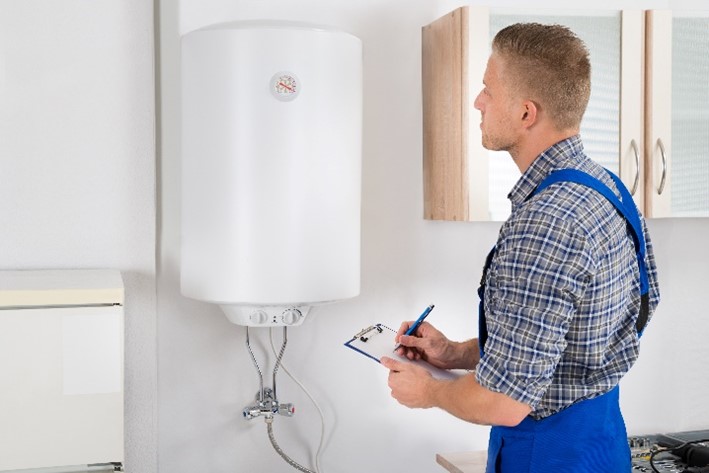Expert Tips for Maintaining Your Home's Hot Water SystemExpert Guidance on Caring for Your Home's Hot Water System
Expert Tips for Maintaining Your Home's Hot Water SystemExpert Guidance on Caring for Your Home's Hot Water System
Blog Article
They are making a few good points on How to Maintain a Hot Water Heater in a Few Simple Steps overall in this great article below.

Hot water is crucial for everyday convenience, whether it's for a revitalizing shower or cleaning recipes. To ensure your hot water system runs effectively and lasts much longer, normal upkeep is key. This short article supplies sensible tips and insights on how to preserve your home's warm water system to prevent disturbances and expensive fixings.
Intro
Keeping your home's warm water system may seem complicated, yet with a couple of straightforward actions, you can guarantee it runs efficiently for several years ahead. This overview covers everything from understanding your warm water system to do it yourself upkeep pointers and recognizing when to call specialist aid.
Relevance of Keeping Your Warm Water System
Normal upkeep not just prolongs the life expectancy of your hot water system but also guarantees it runs successfully. Disregarding upkeep can cause reduced efficiency, greater power costs, and also premature failure of the system.
Signs Your Hot Water System Demands Upkeep
Understanding when your hot water system needs focus can protect against significant problems. Watch out for signs such as irregular water temperature level, odd sounds from the heating unit, or rusty water.
Understanding Your Warm Water System
Prior to diving into maintenance jobs, it's handy to comprehend the fundamental parts of your warm water system. Usually, this includes the water heater itself, pipelines, anode rods, and temperature controls.
Monthly Upkeep Tasks
Routine monthly checks can aid capture minor concerns prior to they intensify.
Flushing the Hot Water Heater
Flushing your water heater gets rid of sediment buildup, boosting effectiveness and lengthening its life.
Monitoring and Changing Anode Rods
Anode rods prevent deterioration inside the storage tank. Inspecting and changing them when worn out is crucial.
Checking and Adjusting Temperature Settings
Changing the temperature setups guarantees ideal efficiency and security.
DIY Tips for Upkeep
You can execute a number of upkeep tasks on your own to keep your warm water system in top problem.
Checking for Leakages
On a regular basis evaluate pipes and links for leaks, as these can bring about water damage and greater expenses.
Examining Pressure Alleviation Valves
Evaluating the stress relief valve guarantees it functions properly and prevents extreme stress accumulation.
Shielding Pipes
Protecting hot water pipes lowers heat loss and can conserve power.
When to Call a Professional
While DIY upkeep is advantageous, some problems call for expert know-how.
Complex Problems Calling For Professional Assistance
Instances include significant leakages, electrical issues, or if your hot water heater is consistently underperforming.
Routine Specialist Upkeep Advantages
Expert upkeep can include extensive evaluations, tune-ups, and making certain compliance with safety requirements.
Verdict
Regular maintenance of your home's hot water system is necessary for effectiveness, durability, and price financial savings. By following these suggestions and understanding when to seek expert aid, you can ensure a dependable supply of hot water without unforeseen disturbances.
How to Maintain an Instant Hot Water Heater
Before tinkering with your hot water heater, make sure that it’s not powered on. You also have to turn off the main circuit breaker and shut off the main gas line to prevent accidents. Also turn off the water valves connected to your unit to prevent water from flowing into and out of the appliance. 2. When you’re done, you have to detach the purge valves’ caps. These look like the letter “T” and are situated on either side of the water valves. Doing so will release any pressure that has accumulated inside the valves while at the same time avoid hot water from shooting out and burning your skin. 3. When the purge valves’ caps are removed, you have to connect your hosing lines to the valves. Your unit should have come with three hoses but if it didn’t, you can purchase these things from any hardware or home repair shops. You can also get them from retail stores that sell water heating systems. Read the user’s manual and follow it to complete this task properly. When the hosing lines are connected, open the purge port’s valves. 4. You should never use harsh chemical cleaners or solutions when cleaning your unit. Make use of white vinegar instead. It should be undiluted and you’ll probably use about 2 gallons. 5. Now flush your water heater. This task should probably take about 40 minutes. We can’t give you specific directions for this because the procedure is carried out depending on the type, model and brand of your heater. With that being said, refer to the user’s manual. 6. When you’re done draining the unit, you have to turn off the purge port valves again. Remove the hosing lines that you earlier installed on each of the water valves. Put the valve caps (purge port) back in their respective places and be very careful so as not to damage the rubber discs that are found inside these caps. 7. Now that everything’s back in place, check your user’s manual again to find out how to reactivate your water heating system. 8. Once it is working, turn one of your hot water faucets on just to let air pass through the heater’s water supply pipes. Leave the tap on until water flows smoothly out of it. https://www.orrplumbing.com/blog/2014/september/how-to-maintain-an-instant-hot-water-heater/

As a devoted reader about How to Maintain Your Water Heater & Prolong its Life, I figured sharing that piece of content was smart. In case you liked our post kindly consider to share it. Thanks a lot for your time. Revisit us soon.
Learn More Report this page